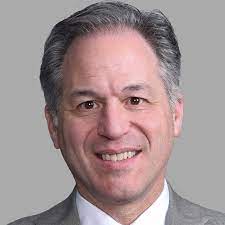“I left Venezuela because our country has been destroyed,” a woman who arrived in Lima two years ago told Reuters. “It’s very sad what happened in these elections — we’ve already lived through this.”
Democracy broke down spectacularly years ago in Venezuela. In Nicaragua, President Daniel Ortega is staging a sudden, brutal roundup of his last opponents.
Peru’s is a comparatively glacial story of democratic decay. Bribery scandals and factional intrigue have led to criminal charges against four recent presidents; three different people held the office within a single week last year. Peru’s crisis may nevertheless be more dismaying, because until recently the country stood out as an economic and social success story — Latin America’s anti-Venezuela.
Peru’s “social market” model, adopted in its 1993 constitution, brought greater equality along with rapid growth, buoyed by mineral sales to China and a trade-promotion deal with the United States.
Within the past quarter-century, Peru’s real per capita income has nearly tripled; its poverty rate has fallen from more than half of the population to a fifth; and its Gini index, a measure of income distribution, is now one of the best in Latin America.
Ninety-three percent of poor Peruvians had access to electricity at home in 2020, up from 63 percent in 2009, while access to water grew from 44 percent to 77 percent, according to data compiled by economists Ian Vasquez and Ivan Alonso. Behind these numbers are millions of lives improved, indeed, saved.
It was a truly heartening turnaround for a country that almost collapsed in the early 1990s due to hyperinflation, Maoist terrorism and military repression.
Then came covid-19, which has killed 188,000 Peruvians, resulting in the highest per capita death rate in the world. Peru’s export- and tourism-dependent economy shrank 11 percent in 2020, plunging 2 million people back into poverty. These horrors, not past achievements, were top of mind for Peruvian voters in 2021.
Any government would have struggled to cope, but Peru’s had not developed a solid public health system during the good years, a failure which Peruvians linked to chronic corruption.
“Rage is a powerful sentiment, and the pandemic set it off up and down the country,” Alonso says.
For all the success of the Peruvian economic model, no broad-based political party had formed to advocate it; career politicians spun off a series of organizations, instead.
Castillo ran as the nominee of a new party whose secretary general is a Cuban-trained doctor and open advocate of Marxism-Leninism. The candidate himself, however, a teachers union leader from a remote Andean village, came off as soft-spoken and humble — especially in contrast to the Lima politicos who crowded an 18-candidate first-round field in April. (The incumbent, a congressionally appointed caretaker, did not seek the office in his own right.)
His shallow but sincere-sounding attacks on free markets and foreign mining companies won him 19 percent, enough to qualify for the June 6 runoff against Fujimori, who got 13 percent.
Thus did Peru’s fragmented system of direct presidential election present voters with a choice between the two candidates that the public regarded least favorably, according to polls.
Campaigning in a yellow straw hat, Castillo ultimately benefited from Peru’s own version of the United States’ red-blue divide: a profound and long-standing cultural gap between the rural Andean highlands, populated heavily by indigenous people, and the cosmopolitan capital, Lima. The city, home to a third of the country’s population, went heavily for Fujimori, while huge rural majorities backed Castillo.
Like so many other events in global politics today — those in the United States included — Peru’s election may have been overtly contested on issues of policy but actually decided by issues of culture and identity.
This could mean Castillo has no mandate for his most radical ideas, which include a Venezuela-like constituent assembly to rewrite the constitution. Many Peruvians appear to hope that he will heed moderate advisers, or be checked by Congress, which the opposition dominates.
So far, the post-election standoff has been blessedly peaceful, perhaps because not even those who voted for either Castillo or Fujimori like them enough to fight for them.
The United States should do everything it can — starting with generous supplies of coronavirus vaccine — to speed Peru’s recovery and support its democrats. One Venezuela is enough.

